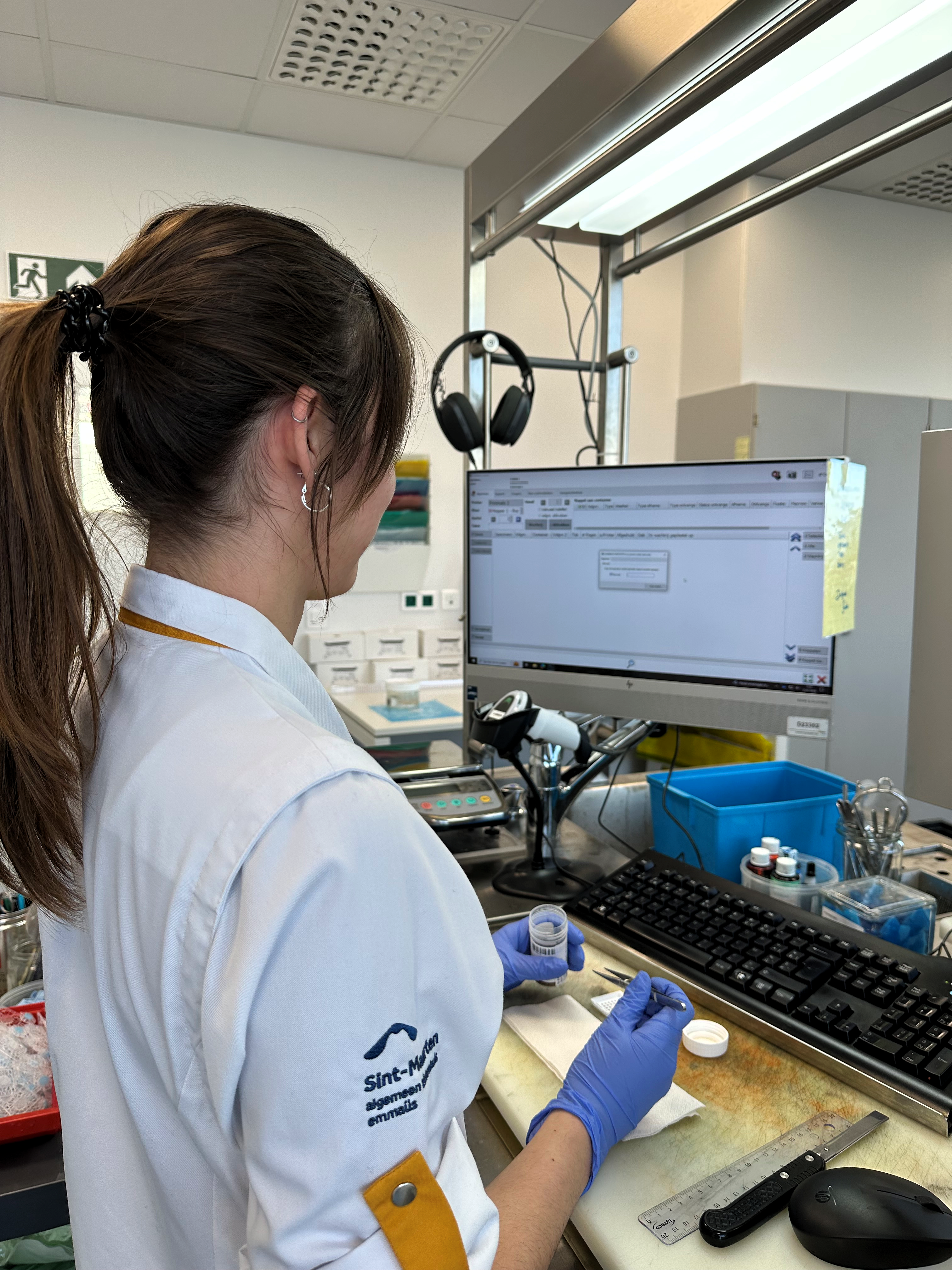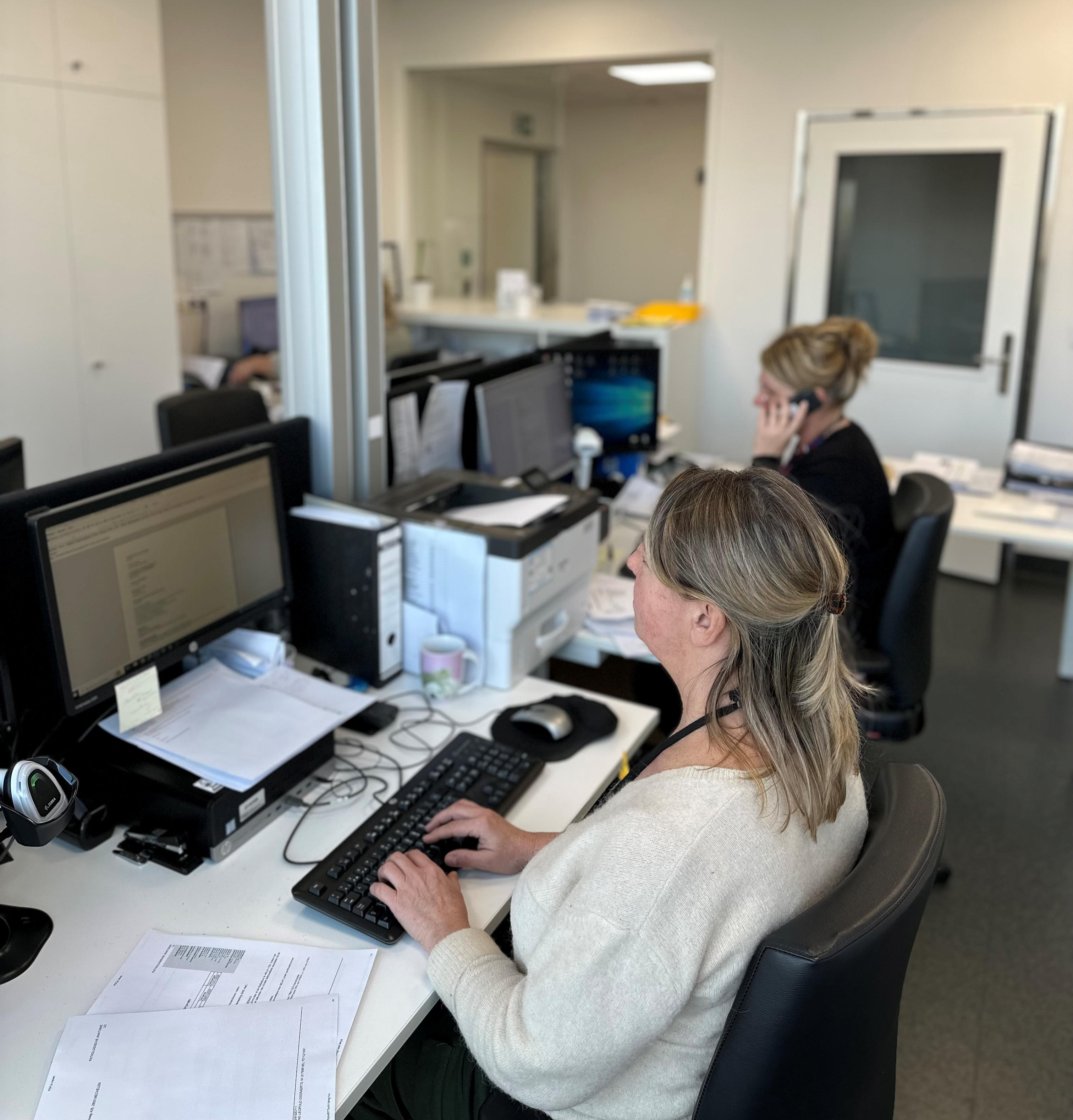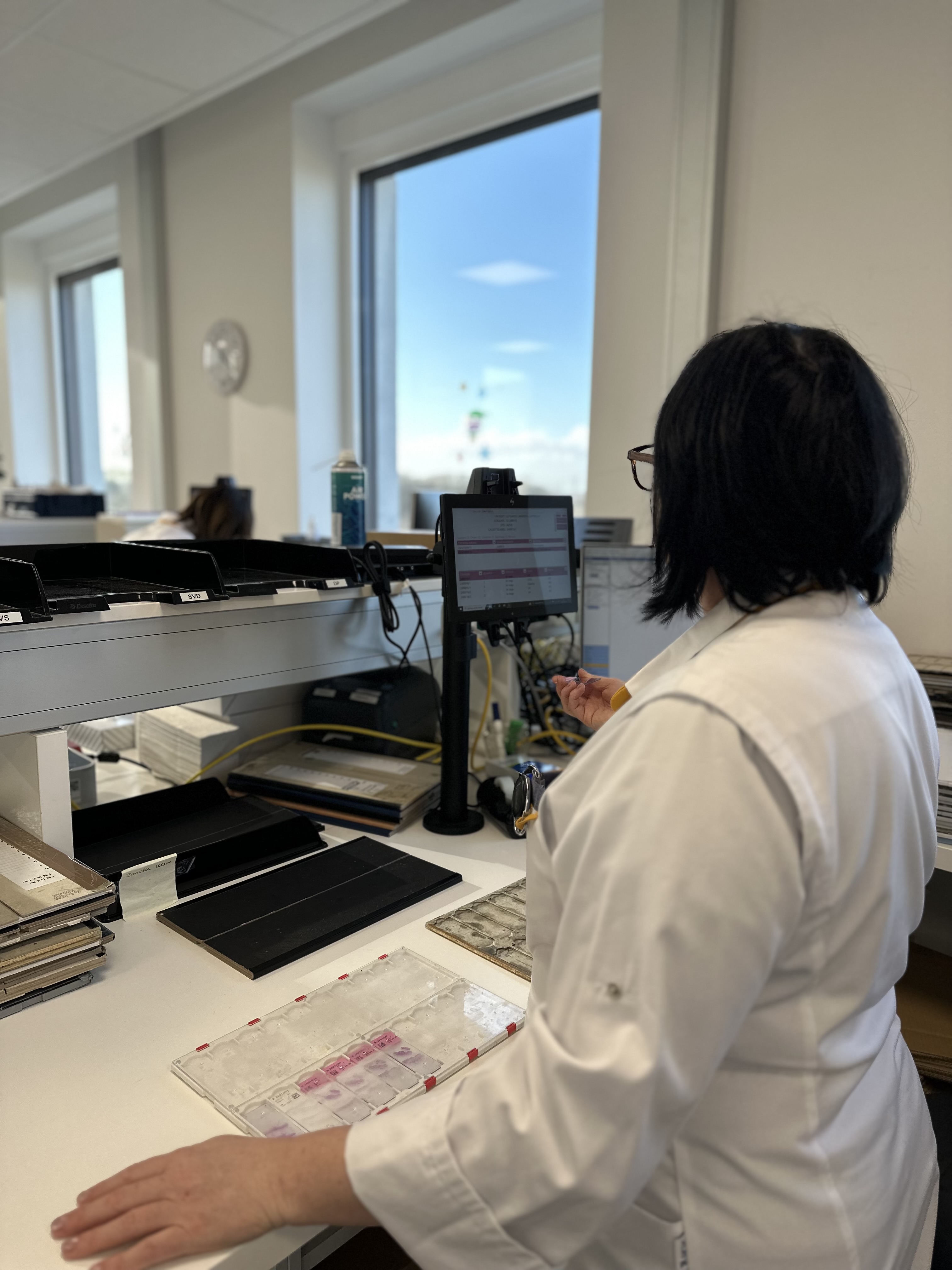AZ Sint-Maarten goes paperless with DaVinci LIS
AZ Sint-Maarten’s Pathological Anatomy Laboratory in Mechelen, Belgium, goes paperless, with new, multi-site DaVinci LIS
In March 2023, the Pathological Anatomy Laboratory at the AZ Sint-Maarten hospital in Mechelen, Belgium, went live with a new DaVinci environment. In addition to upgrading the existing DaVinci laboratory information system (LIS), three separate databases were also merged into a single, central, multi-site environment. The laboratory now operates with a process-driven and virtually paperless workflow. This offers numerous advantages, not only for pathologists, laboratory technologists and administration, but also for clinicians and patients. Efficiency has increased, quality has improved, and traceability is maximized.
Challenge: a more efficient workflow in a multi-site environment
The Pathological Anatomy Laboratory at AZ Sint-Maarten carries out pathology examinations for three hospitals: AZ Sint-Maarten, AZ Voorkempen and AZ Rivierenland’s Rumst campus. For over a decade, the laboratory has relied on the DaVinci LIS for sample registration and reporting, with the other activities being performed manually. Furthermore, although there was only one actual laboratory, each hospital had its own DaVinci environment. It was clear that the situation could be improved.
The laboratory thus issued a tender for a new LIS, to digitize and automate the manual workflow, optimize quality, and provide maximum traceability, within one, shared, multi-site environment for the three hospitals. Once again, Clinisys, with its DaVinci LIS, emerged as the preferred partner.
Risk analysis and detailed roadmap form basis for successful transition
To ensure a successful implementation, the pathologists, laboratory technologists and administration worked together very intensively, including frequent meetings with the hospital’s ICT project leader and with Clinisys. « With such a far-reaching project, it is important to involve enough people, and give them the space to concentrate on the project. That’s how we approached it in our laboratory, » says Dr Vera Schelfhout, anatomic pathologist.
« In addition, we took extensive time to prepare a detailed script, which proved to be a big advantage. We carried out an initial, thorough risk analysis and starting from the risks, we then documented each step. The result was a comprehensive validation file. I would recommend that every laboratory intending to install a new LIS, work with such a playbook, » says Dr Vera Schelfhout.
Each step was also rigorously tested, and each time, a few issues emerged that needed to be addressed. « Everything had to move so quickly in the last weeks, we were a bit apprehensive about the go-live. But to our great satisfaction, it went off without any problems, » says Vera.
« Thanks to the time we had put into preparation together with Clinisys, we were able to organize the system in a way that makes it easy for us to work with. As a result, the laboratory technologists, logistics staff and pathologists were up-and-running with it quite quickly. I also put together a manual with pictures and icons, which gave the users additional guidance during the switchover, » continues laboratory technologist Julie Van den Bogaert.
The digital way of working provides great benefits in terms of traceability. You can very easily see who carried out what. If something goes wrong, or you have a question, you immediately know which person to contact. That is all very important for quality control.
A paperless laboratory

Once the new LIS was in production, the benefits quickly became clear. To begin with, the laboratory can now work completely paperless. When a sample arrives at the administrative office, the order form is scanned and the sample is given a unique reference number that is used throughout the entire flow.
Once the new LIS was in production, the benefits quickly became clear. To begin with, the laboratory can now work completely paperless. When a sample arrives at the administrative office, the order form is scanned and the sample is given a unique reference number that is used throughout the entire flow.
« This digital working method provides great traceability benefits. You can very easily see who did what. Should something go wrong or you have a question, you immediately know which person to contact. That is all very important for quality control, » Vera states.
Julie adds: « We spend less time searching, because we can immediately see the status of an exam on the screen. Have the slices been cut? Has the hematoxylin-eosin staining or immunohistochemistry been done? Has something slipped between the cracks? What went wrong? This saves us a lot of time. Moreover, we can better estimate how long it will take before the test results will be ready, and get the ball rolling more quickly. »
The pathologists’ workflow is enhanced by the ‘widget screen’, where they can access all relevant data at a glance. « Before, we had to switch between tabs to find the information we needed, but that’s no longer the case. I am a big fan of this screen, as are all my colleagues here, » Vera continues.
« The risk of errors is also reduced, thanks in part to the procedures that were put together in the laboratory, such as immediately linking blank slides or stains based on the tissue submitted, which then flow along from registration onwards, » says Liesbeth Verschaeren, administration team leader. « That increases the importance of the sample registration task: the right information has to be linked to a test immediately. At the macroscopy station, for instance, you can’t afterwards add that blank slides are needed as well. »

« When samples are received, a standard report for macroscopy is prepared immediately. At the workstation itself, you only have to fill in some data: the weight of the specimen, dimensions, etc. This not only saves time, but helps us work in a structured and uniform way, » says Vera.
Clinicians are also satisfied. « When we receive a sample at the administrative office and assign a reference number to it, the ordering physician gets a confirmation of this in the medical record. They are reassured, and know that the report with the findings will soon follow, » notes Liesbeth. « What is also new is that we can now send PDFs to the medical record, allowing us to share subcontractor reports smoothly. For the clinicians, it is definitely an added value that they can access everything in the medical record. »
Wide-spread efficiency gains

The biggest benefit of the new DaVinci LIS is the substantial increase in efficiency in the laboratory.
Some examples:
- Once a laboratory technologist has scanned a tissue block, everything is controlled from DaVinci. Barcodes and sample numbers are printed directly on the slides, eliminating the need to stick on labels. Alternatively, for a study using another device that requires a different slide, a label is automatically printed. This reduces manual handling for the laboratory technicians considerably.
- The process to get to a report is accelerated. When additional tests are needed, they can be requested with a mouse click. The laboratory can then get to work immediately. This saves a huge amount of time – as much as an hour per patient.
- Macroscopy reports are prepared automatically. All the pathologist has to do is the microscopic examination, and then formulate a conclusion.
- For immunohistochemical staining, the turnaround time is reduced by a day. Tissue cutting is also faster.
- The status of an exam can be seen very quickly – wherever the sample is in the workflow. This saves the team a lot of searching.
What is DaVinci LIS?
The DaVinci laboratory information system (LIS) supports all classic pathology processes, from the receipt and registration of the cell or tissue material to be examined, to the reporting of results. Pathologists, assistants, laboratory technologists and administrative staff have access to personalized tasks and shared work lists. This allows the team to work better together and increases productivity in the laboratory.
In addition to routine tasks, DaVinci also makes it possible to manage more complex work processes, such as histology, cytology, tumor banking, molecular pathology and digital pathology.
Related content
Clinisys DaVinci
The DaVinci Anatomical Laboratory Services LIS is a user-friendly, comprehensive solution, designed by and for pathologists.
Case study – AZ Sint-Jan AV Brugge-Oostende, Belgium
Embracing digital pathology, future-oriented pathology lab reaches beyond its hospital walls.
